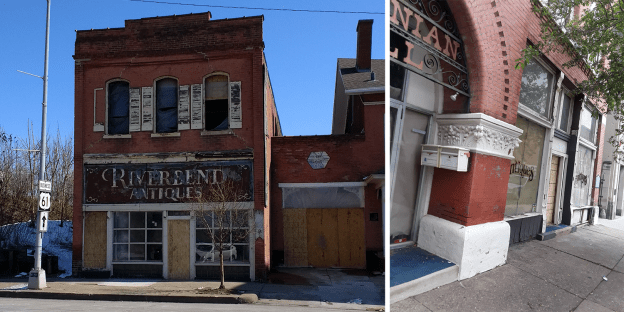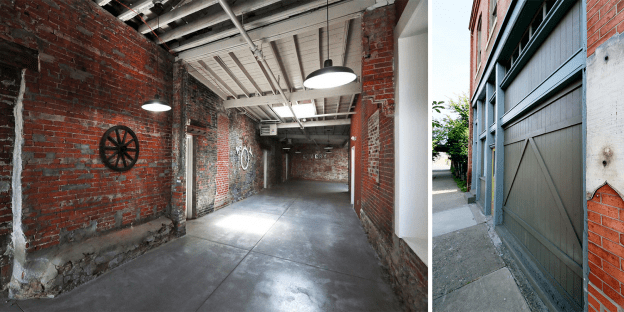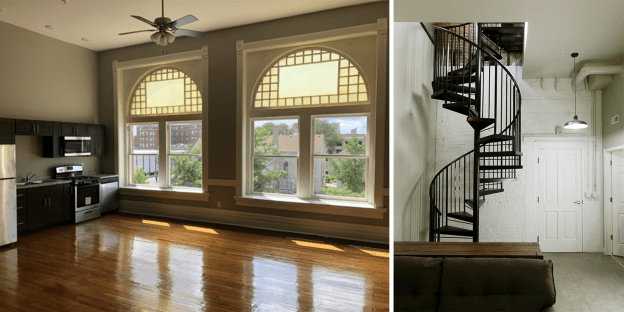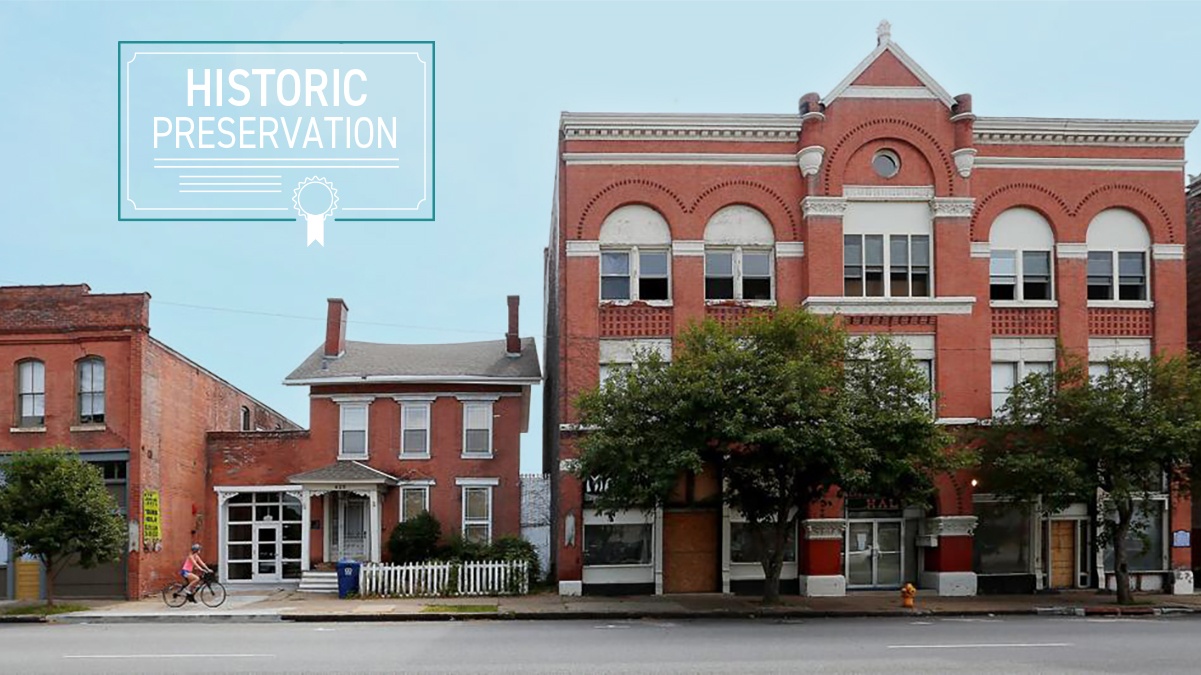Owners of the historic Phillip Worley House and Hibernia Hall recently completed the three-part federal approval process through the Iowa State Historic Preservation Office and the National Park Service Historic Preservation Tax Credit program to rehabilitate the three-part structure for modern-day use.
Comprised of three different structures (Livery Stables, Worley House, and Hibernia Hall), the site has been listed on the National Register of Historic Places for nearly three decades. Located at the foot of the famous Brady Street in Davenport, Iowa, local investors applied for the Federal Historic Preservation Tax Incentive program to preserve the cultural significance of this local landmark.
Bray Architects began the rehabilitation project in 2017, transforming the three-structure campus into a mixed-use development, including contemporary residential loft-style living units, commercial retail, and restaurant space.
Water and weather damage combined with covered and removed facade elements left these structures nearly unrecognizable. The Bray team carefully planned for the reconstruction of missing historic elements along with the careful restoration and repair of the existing building envelopes.
Work was completed as a total redevelopment of the properties, bringing new life to a once forgotten part of Davenport’s rich history.



About the Federal Historic Preservation Tax Incentives program
The Federal Historic Preservation Tax Incentives program encourages private sector investment in the rehabilitation and re-use of historic buildings. It creates jobs and is one of the nation’s most successful and cost-effective community revitalization programs. It has leveraged over $102.64 billion in private investment to preserve 45,383 historic properties since 1976. The National Park Service and the Internal Revenue Service administer the program in partnership with State Historic Preservation Offices.
Q+A with John Mahon, lead architect on the Phillip Worley House + Hibernia Hall historic preservation project
What was your favorite part of the Phillip Worley House + Hibernia Hall Project?
This campus of buildings has been an ever-present feature at the foot of Brady Street for as long as I can remember. It was an honor to work on such a prominent structure, so integral to the history of Davenport. Located on a highly visible arterial route within Davenport, the disrepair and decay of these buildings threatened their existence. It was rewarding to know that we were able to not only repair and reinforce the structures but to reprogram the buildings with new occupants to ensure the existence of these buildings well into the future.
What was the most challenging part of the Phillip Worley House + Hibernia Hall Project?
These historic buildings had very limited documentation available. The storefront of the Livery was captured in a historic photograph, so we were able to use the small relic to re-create the front façade and storefront. The original building plans had been altered over time, and we found it difficult to understand which parts of the construction were original and which were more recent additions. As is common with many old buildings, within Hibernia Hall we found existing windows and doors during the demolition phase that were encapsulated within walls. These finds gave us a better picture of the original buildings and were used in the final design to, once again, display their original beauty.
If someone is interested in applying to the Tax Incentives program, where do they start? What are some things to consider?
To qualify for historic tax credits, a building must be one of the following:
- Listed on the National Trust for Historic Preservation Register of Historic Places
- Deemed eligible for listing on the Register
- Considered a contributing structure to a Historic Preservation District
- Designated as a Local Landmark
When applying for the tax credit program, often the first step is to begin the process of listing or determining eligibility for listing a building. Once eligibility is confirmed, it is often necessary and helpful to contact an architect and/or historic preservation consultant to begin any tax credit application process.
Are you considering a historic preservation project or applying to the Federal Historic Preservation Tax Incentives program? Reach out to John Mahon to learn more about the process.



